Public Opinion Tracker: Teacher Survey Top Takeaways Q4 2021
With the holiday season in the rearview, schools and families now turn their attention to the second half of the academic calendar. COVID-19 continues to rear its ugly head with cases reaching unseen levels nationwide, thanks in part to the Omicron variant. Schools are bearing the brunt of it, however. They face difficult decisions about virtual learning, closures, staffing issues and classroom safety.
With teachers at the front lines of all these education decisions, their perspective is crucial for navigating these debates. For that reason, we survey about 1,000 teachers quarterly. This, in conjunction with our monthly polling of parents and the general population, provide key insights into the minds of the indispensable, our teachers. From December 16-24, Morning Consult surveyed 1,000 K-12 teachers about COVID-19, school choice and other budding topics surrounding education.
In a nutshell: In December, teachers were increasingly comfortable returning to school, compared to the beginning of the academic year, despite rising COVID-19 cases. This comfort may be linked to the positivity towards their schools’ handling of COVID-19, as teachers rate schools’ COVID-19 responses more positively than the general population. The majority of teachers continued to support school choice, and that support only increased with more information. Most teachers, as well as school parents, believe schools should provide multiple learning options for their students.
1. Major school choice policies remain popular with most teachers. After teachers received basic definitions of terms, education savings accounts (ESAs), school vouchers and charter schools received some or strong support from 77 percent, 57 percent and 64 percent, respectively. Teachers who work at private or charter schools supported each of these policies more than district school teachers, and teachers with fewer than 15 years of experience were more supportive than teachers with more experience. Vouchers were the least popular of the three major school choice policies among teachers. Though, voucher support grew amongst all teacher groups when more information was provided.
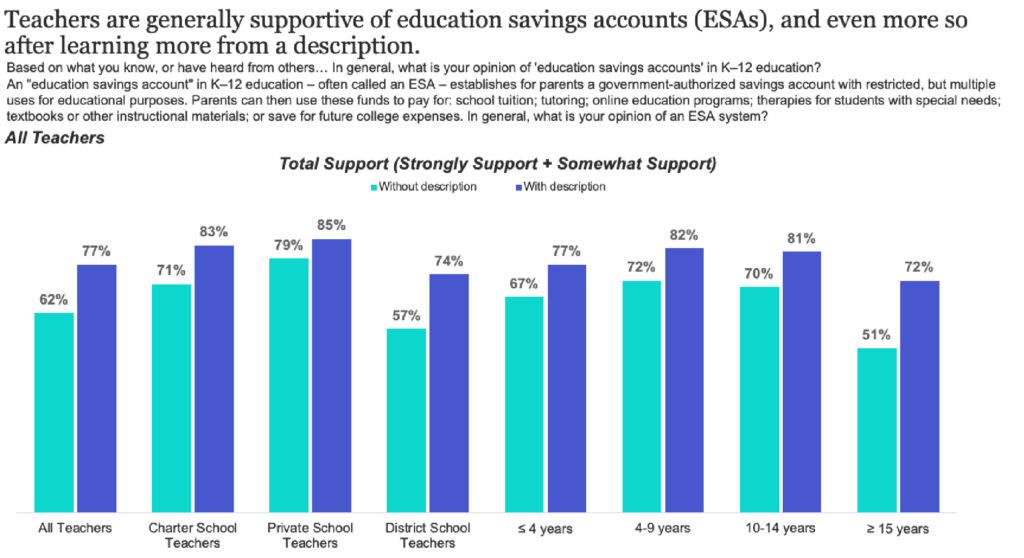
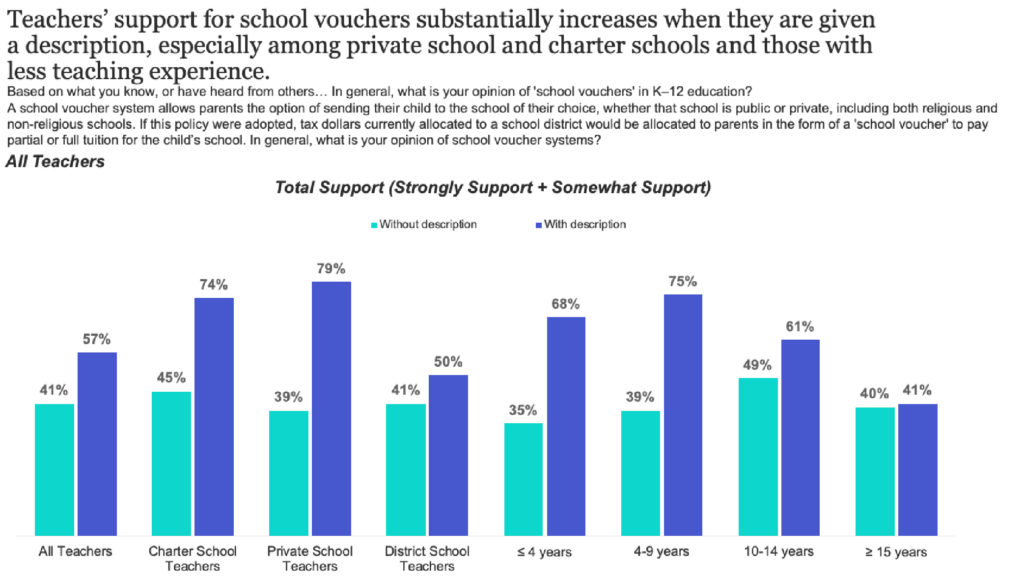
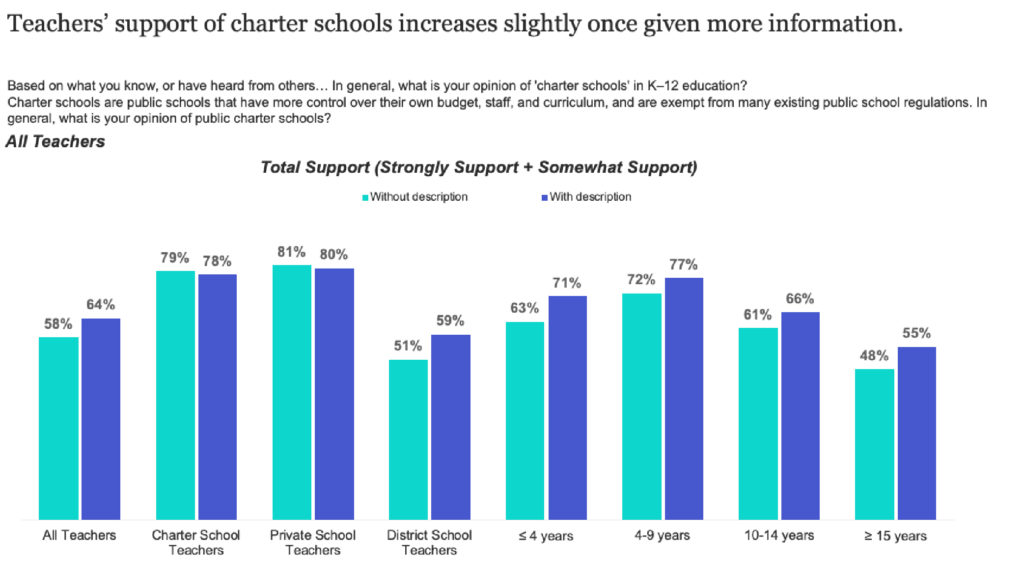
2. Fewer teachers felt COVID-19 was very disruptive in their schools in December compared to September. Nearly half of teachers surveyed believed that the pandemic was still very disruptive in their schools. That number is down 10 percentage points from September, however. In fact, teachers reported decreases in pandemic disruptions to personal routines, household routines and the local community.
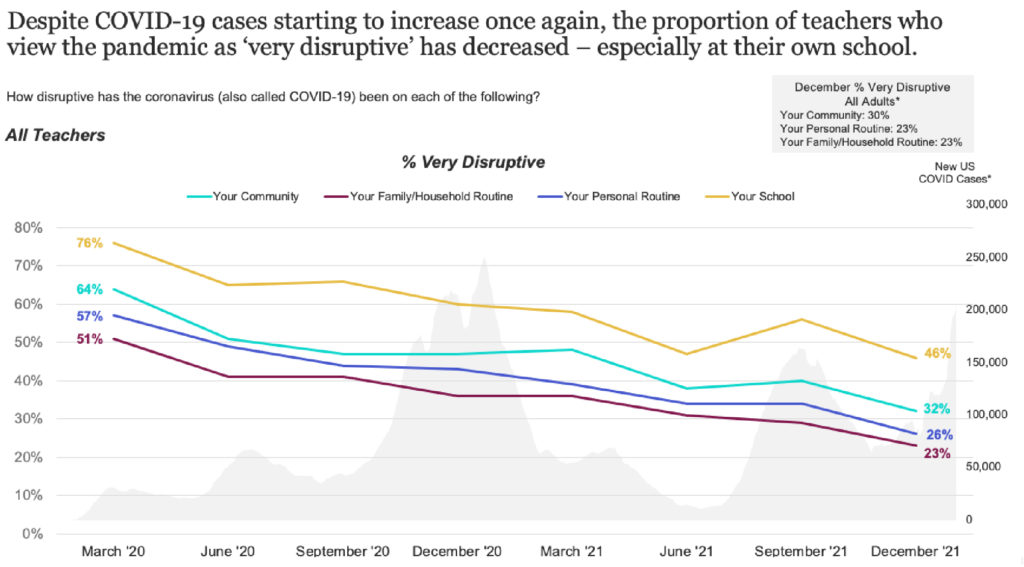
A majority of teachers were increasingly comfortable returning to school in December. Private and charter school teachers—alongside teachers with less experience—were most comfortable with returning to the classroom in December. That said, district school teachers and the more experienced teachers were more comfortable returning than in September. School parents expressed similar responses regarding increased comfortability in their children returning to schools.
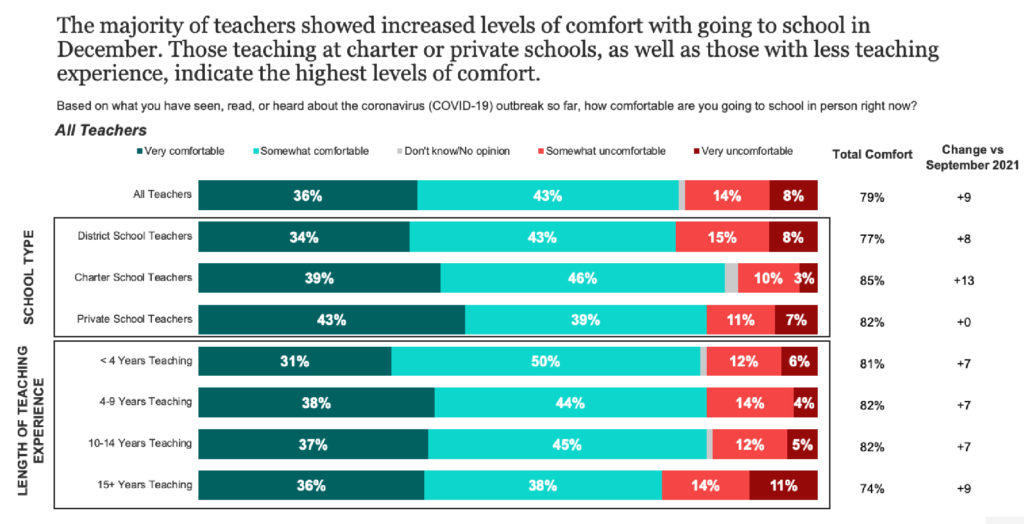
3. Seven out of 10 teachers and parents believe schools should offer students multiple learning options. The support for multiple learning options amongst teachers held steady throughout 2021. Majorities of Americans, regardless of race, income, or political affiliation, have supported access to multiple learning options in our other polling as well.
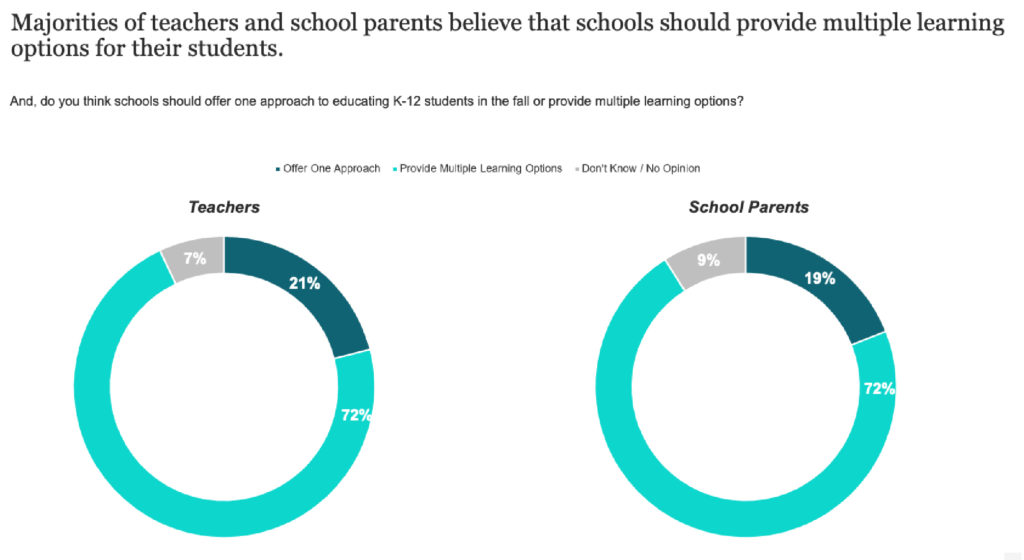
4. Private school and charter school teachers are most likely to express interest and be involved in learning pods. Approximately half of each of those groups have reported being asked to facilitate a learning pod, and only slightly fewer say they actually have facilitated a learning pod. The percentage of public school teachers who reported that they have been asked to facilitate a learning pod is nearly one-third of the levels of charter school or private school teachers. District school teachers also reported accepting requests to facilitate learning pods at a lesser rate than teachers in a charter or private school.
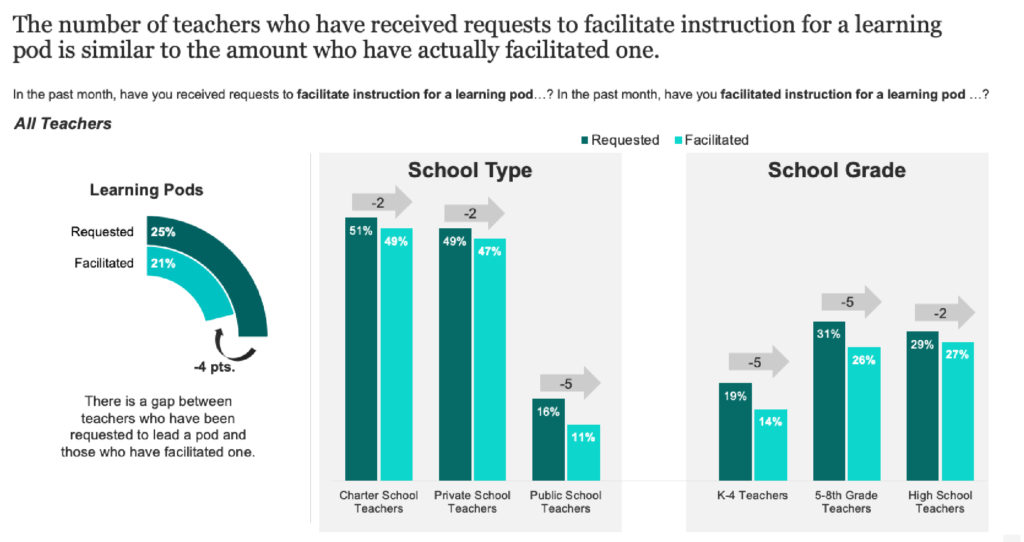
On a related note, private school teachers are much more likely to seek out learning pods or learning pod instructors for their own children compared to district school teachers. Private school teachers were nearly three times as likely to seek out a learning pod than district school teachers, which could be connected to the frequency of requests private school teachers receive to facilitate learning pods. In December, nearly two out of five parents reported that they were participating in or considering joining a learning pod. That is the highest percentage since spring of 2021.
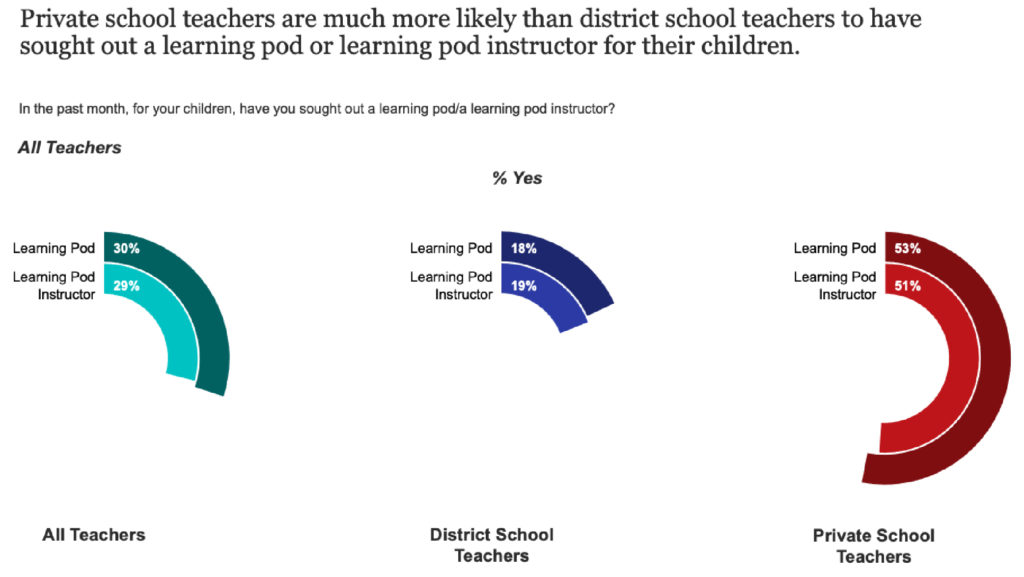
5. The majority of teachers believe that K–12 students are spending too much time on standardized testing. District school teachers, in particular, said they believe this to be the case in their school. Their responses differed substantially from private school teachers, who are more likely to say that the amount of testing time is “about right.” The percentage of teachers who believe their school spends too much time on standardized testing was at its lowest level since spring of 2021. There was a disconnect on standardized testing between teachers and current school parents, as well. As of December, about one in every four school parents believed that their school focuses too much on standardized testing, while four out of 10 school parents believed their school spends a justifiable amount of time on standardized testing.
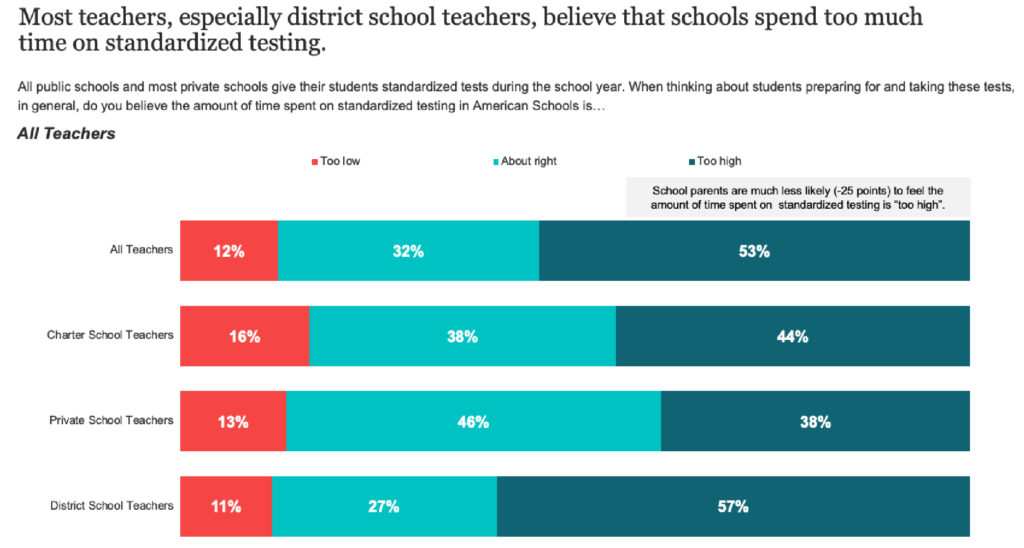
6. Teachers severely underestimate the level of per-student government spending in public schools. When provided a government-reported spending statistic, teachers were a lot less likely to say expenditures were “too low.” The median teacher thought per-student spending in public schools was $5,000 per year. In our monthly general population survey, we find the same estimate from the median adult. Per-student expenditures are actually more than double what the median teacher or median American adult expected—more than $12,000 per student.
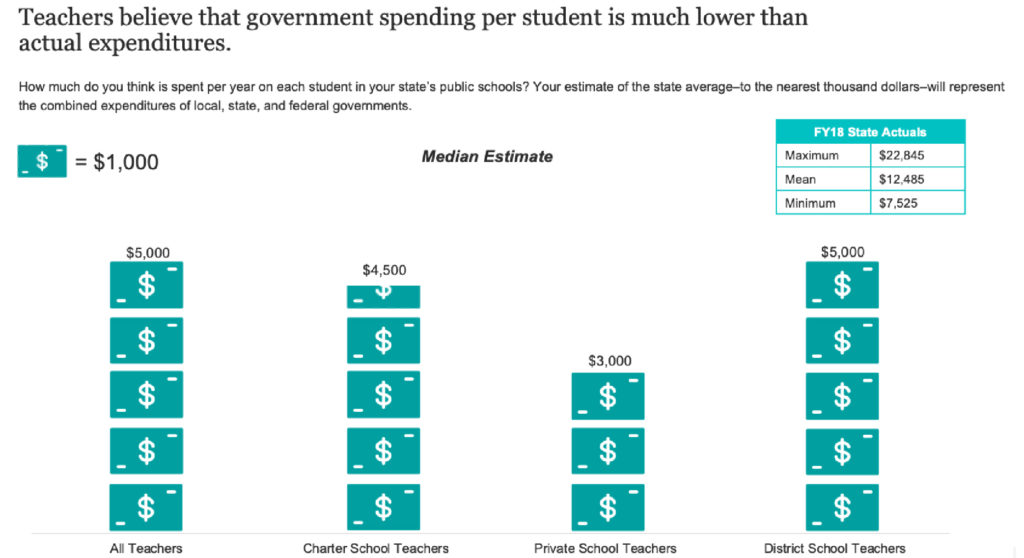
Similar to our monthly surveys of parents and the general population, we posed a split-sample question experiment to teachers. Each teacher received a question asking whether they believed public school per-student spending was too low, just right or too high. Some teachers were shown the actual average expenditure per student in public schools in their state, while other teachers weren’t shown such information. The teachers who received the actual average public school per-student expenditure were 16 percentage points less likely to say per-student spending was too low. That trend was especially prominent among district school teachers, showing a 21 percent decrease in teachers saying spending was too low.
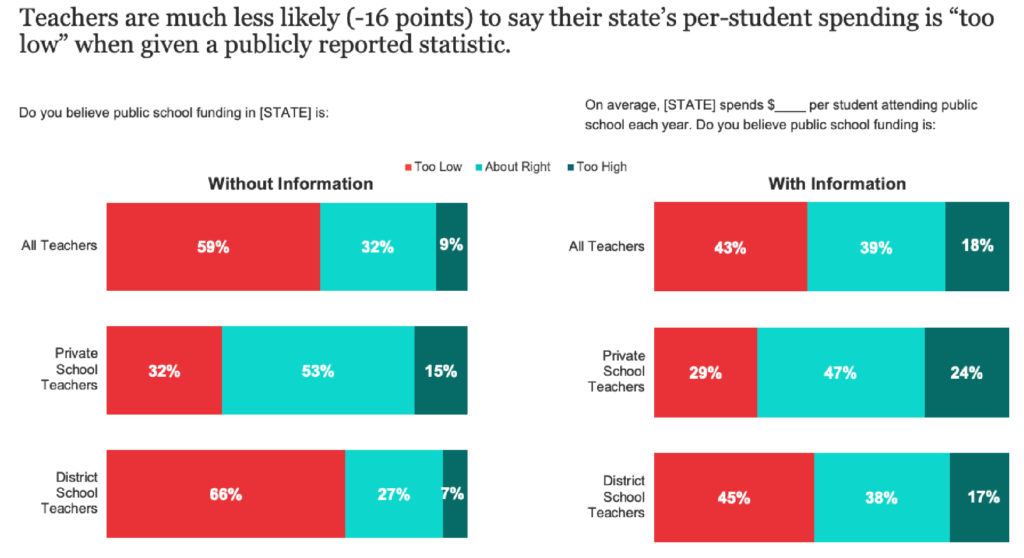
7. A significant portion of teachers have considered leaving the profession over the last three months. The pandemic, as well as continued feelings of underappreciation, are among the more prominent reasons for why K–12 educators have considered leaving or retiring from teaching. Almost half of teachers under the age of 55 and nearly two-thirds of teachers over the age of 55 have given thought to the prospect of leaving the profession. Notably, the number of teachers considering leaving or retiring has actually decreased slightly since our last poll in October.
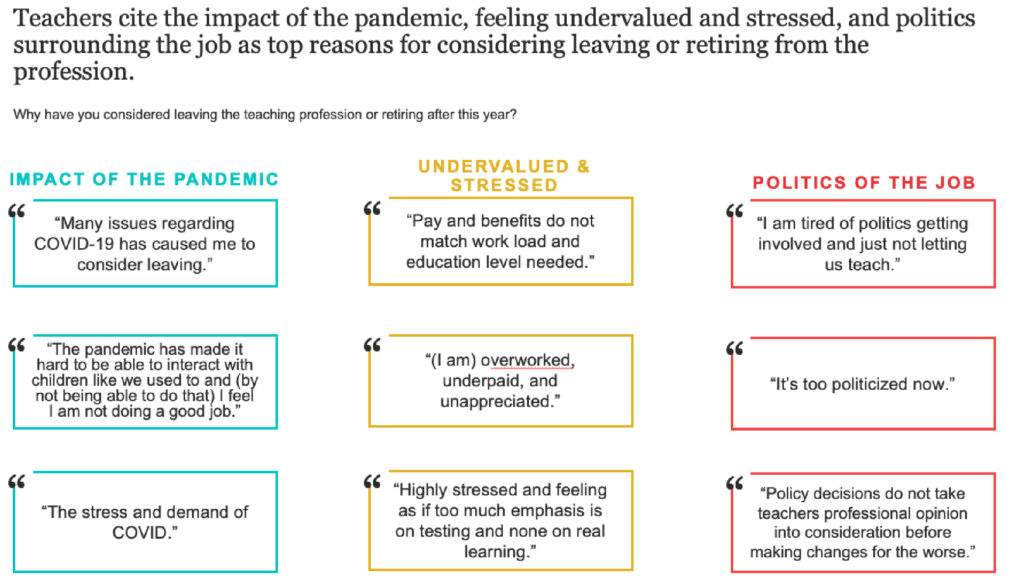
8. One out of five teachers have reported having to quarantine due to COVID-19 in the last month. Charter and private school teachers reported having to quarantine at a higher rate than district school teachers in the last month. Private school teachers have been hit especially hard, as 35 percent of teachers reported having to quarantine over the last month.
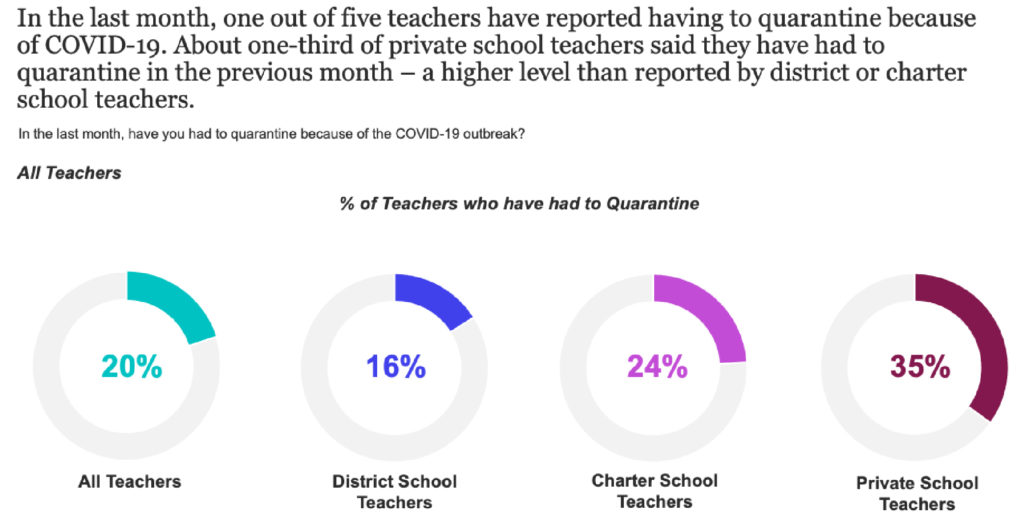
9. Charter and private school teachers were much more likely to recommend teaching than district school teachers. Teachers who are likely to recommend teaching find the profession very rewarding. Low pay alongside feeling overworked are among the reasons teachers wouldn’t recommend the job. Both charter and private school teachers increased slightly in their recommendation of the profession since the beginning of the academic year.
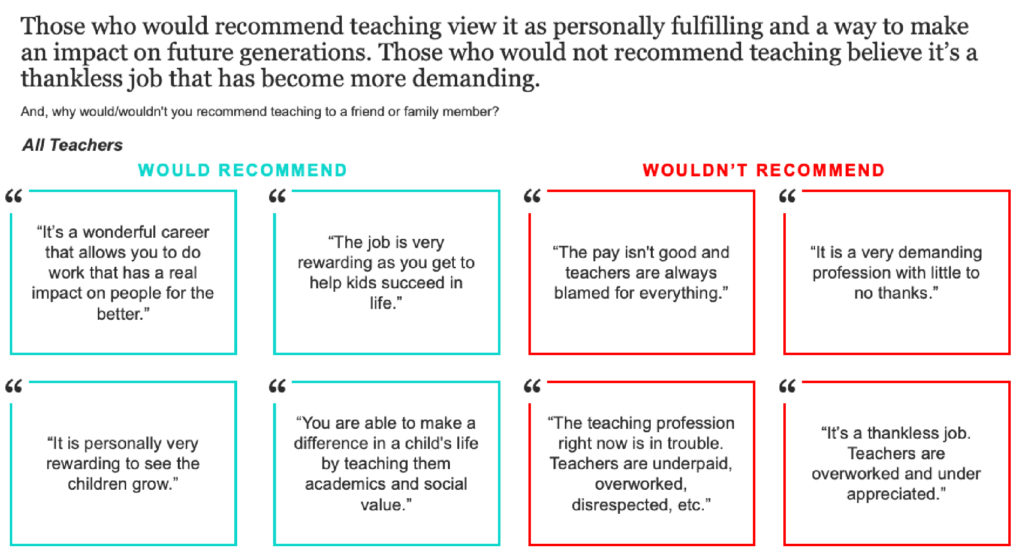
You can visit the EdChoice Public Opinion Tracker site for access to past polling reports and briefs as well as demographic crosstabs and questionnaires. We also provide a more in-depth description of our methodology.
Our team has been cataloging education-related polls and surveys during the pandemic. Our K-12 Education Polls Archive is updated on a rolling basis, roughly a few times each month. Please don’t hesitate to let us know if we are missing any surveys, or if there are accidental errors.




